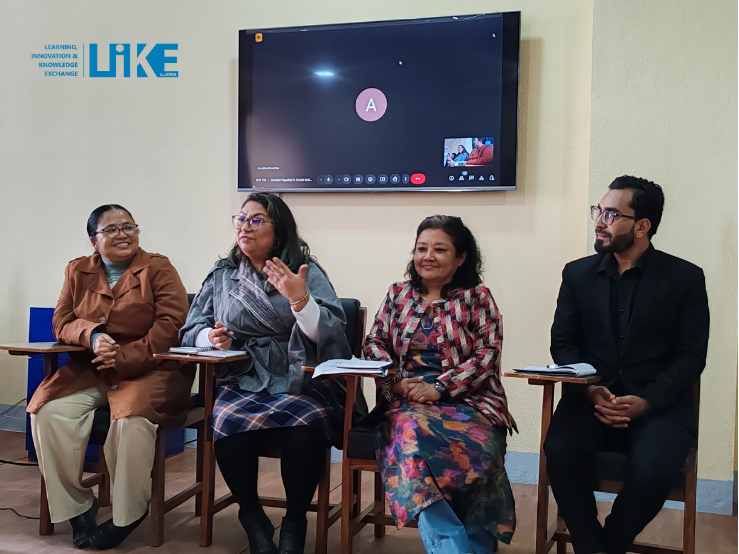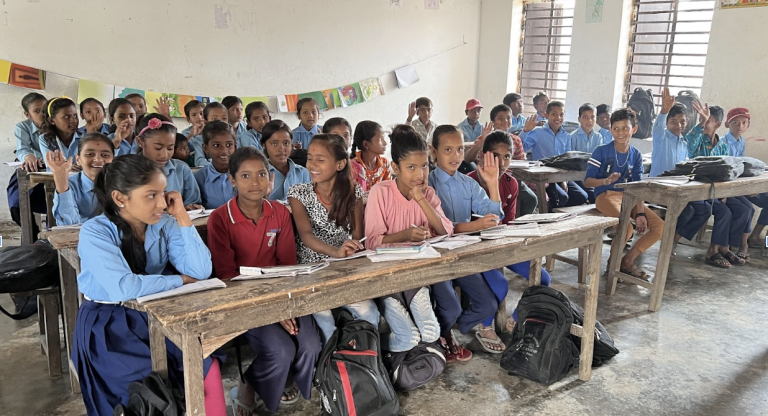By: Isha Karki | Posted:15 Jan 2025

Education is often celebrated as a powerful tool for empowerment, but what happens when children face barriers that go beyond societal norms? During a recent field visit to Bhojpur for our project titled “Promoting Gender Equality and Social Inclusion in Schools: Building on What Children Value and Aspire to Do and Be”, funded by the Global Partnership for Education Knowledge and Innovation Exchange (KIX) and the International Development Research Center (IDRC), we observed two educational institutions for students with disabilities: the Resource Classroom at Yasodhara Secondary School and Bhojpur Residential Basic School of the Deaf.
Bhojpur is an urban municipality located in Bhojpur District, Province No. 1 of Nepal. This district tells a complex story about inclusion, resource distribution, and the lived realities of children with disabilities. Those two institutions were the only institutions catering to children with disabilities in the district. These institutions represent important steps toward addressing the educational needs of children with disabilities, yet they also reveal systemic gaps in understanding well-being, resource distribution, and long-term outcomes.
When observing Bhojpur’s initiatives, policies, and institutional arrangements, there’s a need to reflect on responsibility, resource utilization, and the true meaning of well-being for these marginalized children. These were the only institutions catering to children with disabilities in the district. These institutions represent important steps toward addressing the educational needs of children with disabilities, yet they also reveal a systemic understanding of well-being, resource distribution, and long-term outcomes.
The Resource Classroom caters to 13 children, most of whom have intellectual disabilities, such as Down Syndrome or difficulties in speech and hearing. Similarly, Bhojpur Residential Basic School, established in 2075 BS through community and institutional efforts, educates 23 children (hard of hearing children only) and provides essentials like books and hearing aids. While these schools aim to bridge the gaps, interviews with teachers and stakeholders indicate a disconnect between policies and actual practices. Additionally, there are concerns about whether just two schools will be enough to meet the needs of all children with disabilities in the district.
Policies, Resource Distribution, and Challenges

Nepal’s policy framework for children with disabilities includes:
- Financial Support: Each child receives a monthly allocation of Rs. 5,000, of which Rs. 500 is designated for pocket money. While this amount may ensure some degree of financial independence, it remains insufficient for comprehensive care or education.
- Disability Identity Cards: Issued by the government, these cards (color-coded as red, blue, yellow, and white) help classify disabilities and grant one-time allowances according to card types.
- Specialized Staff and Training: The municipality is responsible for providing trained teachers and caregivers in disability-focused classrooms. However, training remains limited. For instance, the Deaf school teachers get two training sessions annually, leaving staff underprepared.
Despite these arrangements, resource distribution often feels like an end goal rather than a means to enhance well-being. Who ensures the resources are being utilized effectively? For instance, the Resource Classroom provides separate rooms for boys and girls, a step toward gender sensitivity, yet still struggles with limited materials and external dependency.
Well-Being: The Gap Between Policy and Practice

The well-being of children with disabilities is not solely about resource allocation but also about how these resources are utilized. The resource distribution will be meaningful when children can actually translate those resources into functionings (achievements or outcomes). Are these children thriving, or are we merely distributing resources without considering their impact?
Observations in Bhojpur revealed:
- Vocational Training vs. Integration: While children are taught skills like candle-making, the absence of transition planning after age 16 raises concerns. What happens when they leave the Resource Classroom? Are they equipped for independent living, or do they return to a cycle of exclusion?
- Inadequate Support in Deaf Schools: Despite being enrolled in mainstream curriculum and examination systems, the lack of modifications for hearing impairments makes the learning process more challenging. Teachers learning sign language independently highlight a failure of institutional responsibility.
- Dependency on External Aid: Schools rely heavily on external contributions for basic materials. This raises questions about sustainability and the municipality’s role in ensuring resources effectively meet individual needs.
Understanding Responsibility and Inclusion

Inclusive education demands a deeper understanding of responsibility not just of policymakers but also of teachers, institutions, and society. Teachers in schools hold a significant role in shaping perspectives on diversity and inclusion. Yet, interviews suggest limited awareness of the nuanced needs of children with disabilities. The municipality, though well-intentioned, operates within structural limitations. For example, providing Rs. 15 per child for midday meals reflects minimal investment in nutritional well-being. Similarly, when resource proposals face delays, urgent needs remain unaddressed.
True inclusion requires us to look beyond policies and think critically about outcomes. Are we creating equal opportunities or merely distributing resources? In Bhojpur, children with disabilities face double marginalization as individuals with disabilities and as students who do not fit the mold of traditional productivity and efficiency.
We must ask:
- Are resources being utilized effectively to support children’s aspirations?
- How do we ensure capabilities, such as literacy, vocational skills, and social participation, are achieved?
- Can we move from a resource approach (merely distributing resources) to a utility approach (satisfaction derived from available resources), where children’s actual needs and potential are central to decision-making?
Toward an Inclusive Society
Bhojpur’s story shows both progress and gaps in addressing the needs of children with disabilities. Inclusive education goes beyond physical infrastructure and resource distribution; it focuses on how children are empowered to use these resources for their well-being. While resource constraints already pose significant challenges, the idea of tailoring distribution based on individual capabilities and needs may seem ambitious. However, recognizing human diversity and addressing these challenges with sensitivity is essential. Stakeholders such as teachers, policymakers, families, and institutions share the collective responsibility of ensuring these children are not treated with mere sympathy but are provided with genuine love, support, respect, and opportunities to flourish. We can begin to address systemic inefficiencies and build a truly inclusive society by evaluating how resources are distributed and utilized. As one teacher noted, “It’s not about what we give them but how we empower them to use it.” This shift in thinking can pave the way for equitable education and better well-being for every child in Bhojpur, regardless of their abilities.



